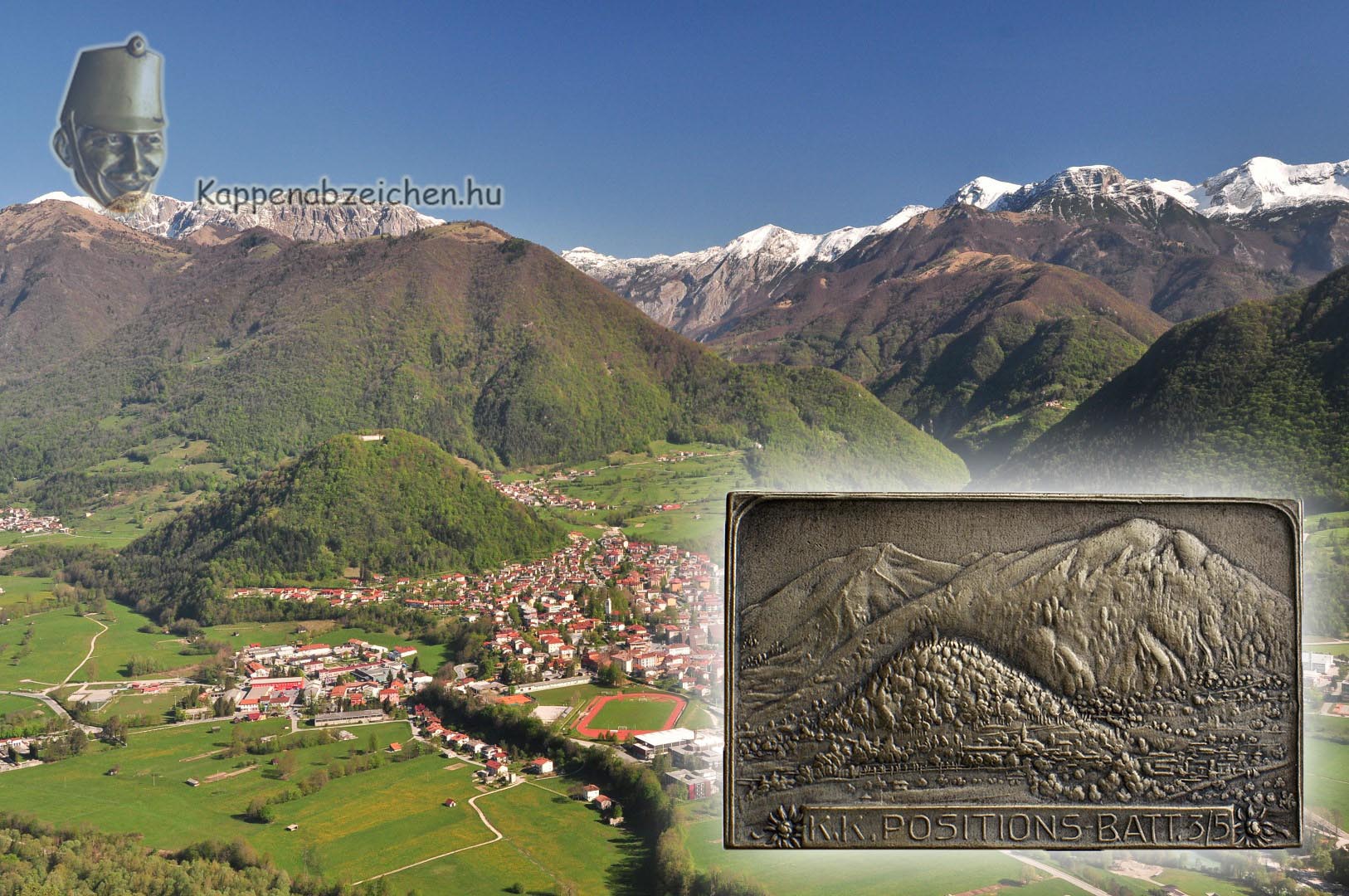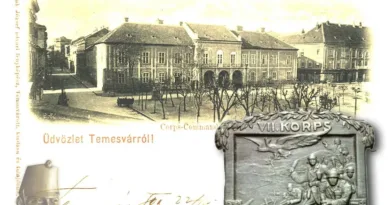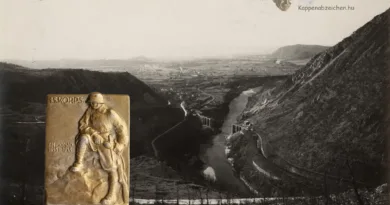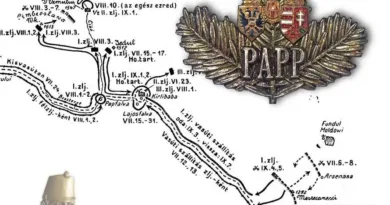Tolmein
Recently, I managed to solve an old puzzle. Not one in fact, but three. The following:
What were the so-called “positional batteries” organizationally?
What guns belonged to these batteries?
Which front does the single “Positionsbatterie” badge represent, where was this 3/5 battery?
I found the reason for the lack of clarity in Christian Ortner’s book The KuK Artillery, published by Militaria Verlag. He doesn’t write about positional batteries either, because there was complete chaos around them. To strengthen the front lines, the Monarchy used defensie guns built into the front line on all fronts. They were not removed from the front line even when the crew of the given front section changed. Thus, positional batteries were practically separated from their own regiments and became brigade- or rather division-directed. Therefore, there is no collected, organized information about them.
One of the photos in Ortner’s book shows an 8 cm field gun of the M 99 pattern. In the text part, the “positional batteries” are discussed related mainly to the mountain artillery. From this, I drew the conclusion that these anti-assault cannons were field or mountain cannons of smaller caliber, often outdated, of older production. Of course, it also follows that the “mother regiments” should be sought primarily among the field artillery and mountain artillery regiments.
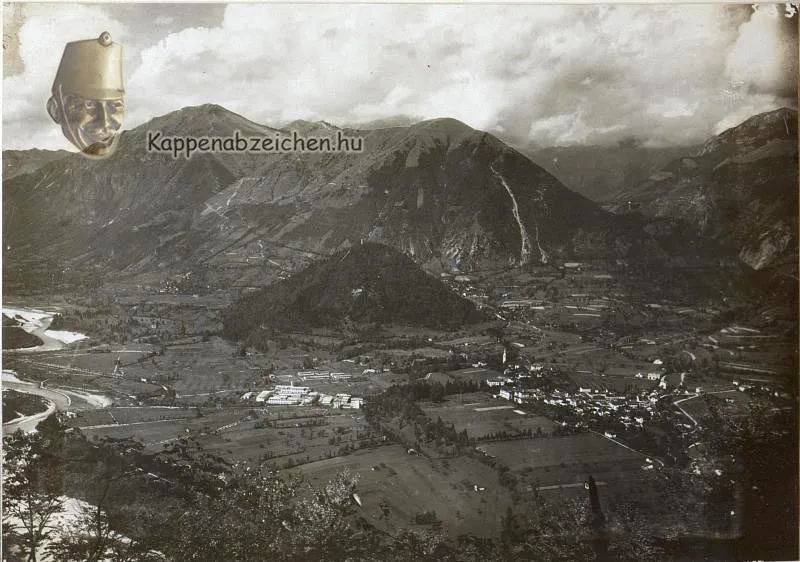
That is, the 3/5 battery could have been either a field gun battery or a mountain gun battery. According to information sources describing the use of the troops, the 5th Field Artillery Regiment was not used on the Italian front. The 5th Mountain Artillery Regiment did, however, divided into batteries. I thought primarily of the Italian front because of the mountain landscape on the badge, although parts of the Carpathians could also have been considered. My suspicions were proven by the fact that the depicted landscape was eerily similar to the Tolmein bridgehead, whose pictures I have been looking at a lot lately. Especially the smaller mountain in the foreground reminded me a lot of the Schlossberg “rising” above the town of Tolmein. The Schlossberg is mentioned in many descriptions because the front stretched from the west coast to the east in front of it, and from this part the Italians attacked the somewhat further mountain range, the Vodil and Mrzli Vrh heights.

All that was left was to somehow prove that the batteries protecting the area really came from the No. 5 mountain artillery. On the basis of the image of the badge, it was assumed that the battery was installed on the Sveta Maria – Mengore mountain high up in the bridgehead, since Tolmein and the surrounding mountains can be seen from there at the right angle. Some of the posts can still be seen on Mount Mengore, and there are also commemorative plaques at the entrance to the shelters. There is a “Positionsbatterie 15 (or 1/5)” sign, but it faces the opposite south, so you can’t see the city. You can see a “Geb. Kan. Batterie 4/5” sign too, which is supposed to be located on the north side of Mengore mountain. So that’s the key. Two batteries of the 5th Mountain Artillery Regiment (Bt 4 and 5) were assigned to the 15th Mountain Brigade and then to the 2nd Mountain Brigade active in the area in late 1915. They protected the Tolmein bridgehead. Their memorial plaque is on the mountain. Not the 3rd but the 1st and 4th batteries. But maybe the 3rd is there somewhere there, you just have to look around. And the inscription on the badge refers to the 3/5 mountain gun battery, which was used as a positional battery.


